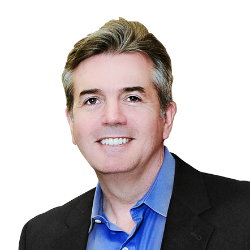
Mavenlink – The company

Mavenlink currently has around 425 employees across seven offices located in the UK, the US and Australia, with a centre in the Philippines. Enterprise Times asked how Mavenlink has progressed in the last few months.
“Last year, we grew nicely through the pandemic at 25%. We felt good about that growth rate. Where a lot of firms refrained from spending, we continued to double down. We hired around 90 personnel in total, maybe 65 net new personnel, mainly in R&D and continued to invest in our enterprise sales business.
“Enterprise sales last year were slightly impacted, with not being able to travel to meet and do workshops with very large clients, that is now returning. One, we found a way to do those virtually, really, really well with large clients. In the second half, the enterprise business picked up quite well and continues to do so. “
“Our commercial business, which is companies that have 500 and below users did extraordinarily well and hit their pre-COVID plans. That was evidence that the world of work is changing and that people needed more of Mavenlink.
“I can’t publish the growth rate this year, but it’ll be significantly higher than last year. We’ll expand our London office, with our new office location, with the goal of at least a 50% growth of headcount in that office, probably similarly with Australia.
“We’re beginning to spend a lot more focus in our Salt Lake office, which is now our largest engineering centre. Four of our executive team members moved to Salt Lake City. Now we’re expanding beyond engineering into sales, business development, marketing. So expansion all around.”
On partners
What are the key strategic partnerships for Mavenlink?
“Both NetSuite and Salesforce are predominant integration partners, and ones we have very strong relationships with, notwithstanding NetSuite’s OpenAir product. The good news is we do quite well against that product in the marketplace. NetSuite also recognises that clients often select the Mavenlink product in the services industry first. Then we can influence their selection of an ERP system. Salesforce is a very large, very happy, satisfied client of ours. We have a good relationship with them as well.
“For our business growth, you’ll see two things. What contributed quite nicely last year to our growth was our systems integration partnerships. We’ve found a number of speciality firms with 150 to 200 consultants in their practice focusing on the services industry in terms of ERP implementations, PSA implementations, resource planning implementations. They’ve become strong endorsers of Mavenlink. Often these firms use Mavenlink for their businesses, know it quite well and are in a position to recommend and implement Mavenlink. We’re quadrupling the spending on our partnership organisation this year and adding many, many new SI partners. Then continue to invest in those integrations.”
Can you name any of those SI partners?
“One I’ll just note because they’re prototypical is Big Bang ERP, out of Montreal. They’ve done an incredible job. What’s nice about these systems integration partners is they come with a very specific set of expertise that we wouldn’t necessarily nurture within our company. They might have very specific skills around revenue recognition or CPQ within Salesforce. They’re experts in NetSuite integration, so we often bring them in even on a pre-sale basis. They end up also doing the services work with us as a partner in these implementations. So it’s really a complementary experience, both pre-sales and post-sales. We’re expanding with the likes of Big Bang ERP around the world.”
Looking back
What have you achieved in the last 12 months?
“The investments that we made in the product in combination with the work that Rob Pickell (CMO) is doing around positioning really sets the company up for long term success. I spent more money than I had planned on R&D last year, by at least a couple million dollars to focus on the depth around what we call dynamic resource optimization.
“We’ve always had this people-centric view of what really is required for professional services success. So we spent a lot of money on very intelligent algorithms around resource planning, scenario planning around resources, and the trade-offs one needs to make throughout that process. They did an excellent job on DRO.
“Part of that was being able to include private networks throughout all that resource optimization. The other one is, which is key to our enterprise business, is our M-Bridge technology. M-Bridge workflows were released in production, adding to our M-Bridge integrations platform.
“Soon to be released will be the Mbridge extensibility platform, which allows you to build custom apps on top of Mavenlink. Think of M-Bridge as a combo of MuleSoft and Force.com, all contained within the Mavenlink platform. We spent considerable effort in bringing those things to market. We see the benefits of that, certainly on the larger business side.”
Looking forward
What do you want to achieve in the next 12 months?
“Well, one is the business has become fairly predictable in terms of growth. We really understand the levers of our growth regarding adding headcount in sales and certain areas. We want to have the market be clear with our new positioning. We’d like to make that stick in terms of being the industry cloud for professional services, and then begin to see the emergence of our sub-industry clouds. Because we think that is what the market is asking for. They’re asking for very bespoke, very specific capabilities for their industry to help them succeed. So it’ll be doubling down on the positioning and the focus, as well as the product.”
Are you looking to go into new countries?
“In the next year, we expect to continue to expand in Europe. We did quite well in Europe last year, and it was surprising to begin to expand essentially, beyond the UK, into Germany and France. So we’re seeing the ability to continue to do that and will put more emphasis on Europe. I don’t expect us to put a new office anywhere in Europe, though we may see headcount in different countries.”
What about Asia?
“We will continue to focus on Asia through Australia. We’re finding that our Melbourne office is a good launchpad for us to continue to engage India. We think India is a growth market for us. We’ve done quite well, some of our largest clients have very large operations that we support in India, and they are referenceable. Right now, even on the commercial side, we are beginning to experiment on pricing to see what the market will bear.”
On Finance
Any fundraising on the horizon?
“Nothing specific that I can talk about. Though, I can say that it’s a good time to consider raising capital, just in terms of valuations and the amount of money and, more importantly, the interest in firms like ours in the future of work, and specifically this category. We may consider that here in the short term, but we’re not out in the market yet.”
Any Acquisition plans?
“We do. We believe that in the next year or so, some acquisitions will be in our portfolio. I’m not going to mention any companies that we’re specifically looking at right now. You can think in the areas of, CPQ, potentially some revenue forecasting/revenue recognition capability that we may want to enhance by acquisition versus build. Then some very interesting technologies that enhance our dynamic resource optimization on the skills side. That has always been the more difficult thing to keep updated and enhanced. We’ve got our eye on a couple of targets that we think would make that awesome.”
On challenges
What are your challenges?
“The biggest one facing us right now, Steve, is getting back out into the field. We’ve got the product, we’ve got the positioning, we’ve got the team. We’ve invested heavily in all of those dimensions. For the commercial business, it isn’t a requirement to be in the field, it’s nice.
“But, for the enterprise business to continue to do as well as we’ve done in the past, it’s going to require that we get out in the field and work with clients. I think that they require it in terms of being able to make good decisions. When we show up in person, we’re able to demonstrate that. If we can just get over that hump, we’re going to do extraordinarily well.”
The book question
What’s the latest business book you read?
“When we had our virtual company kickoff in February, the theme was All In. I’m reading that book (All In by Adrian Gostick and Chester Elton, Amazon Aus, UK, US) and looking at the new team dynamics of personal behaviour and my leadership style. What it takes to lead a company and have everybody committed to feeling that they’re all in and aligned with the mission. It’s really a team-oriented and leadership undertaking.”

























